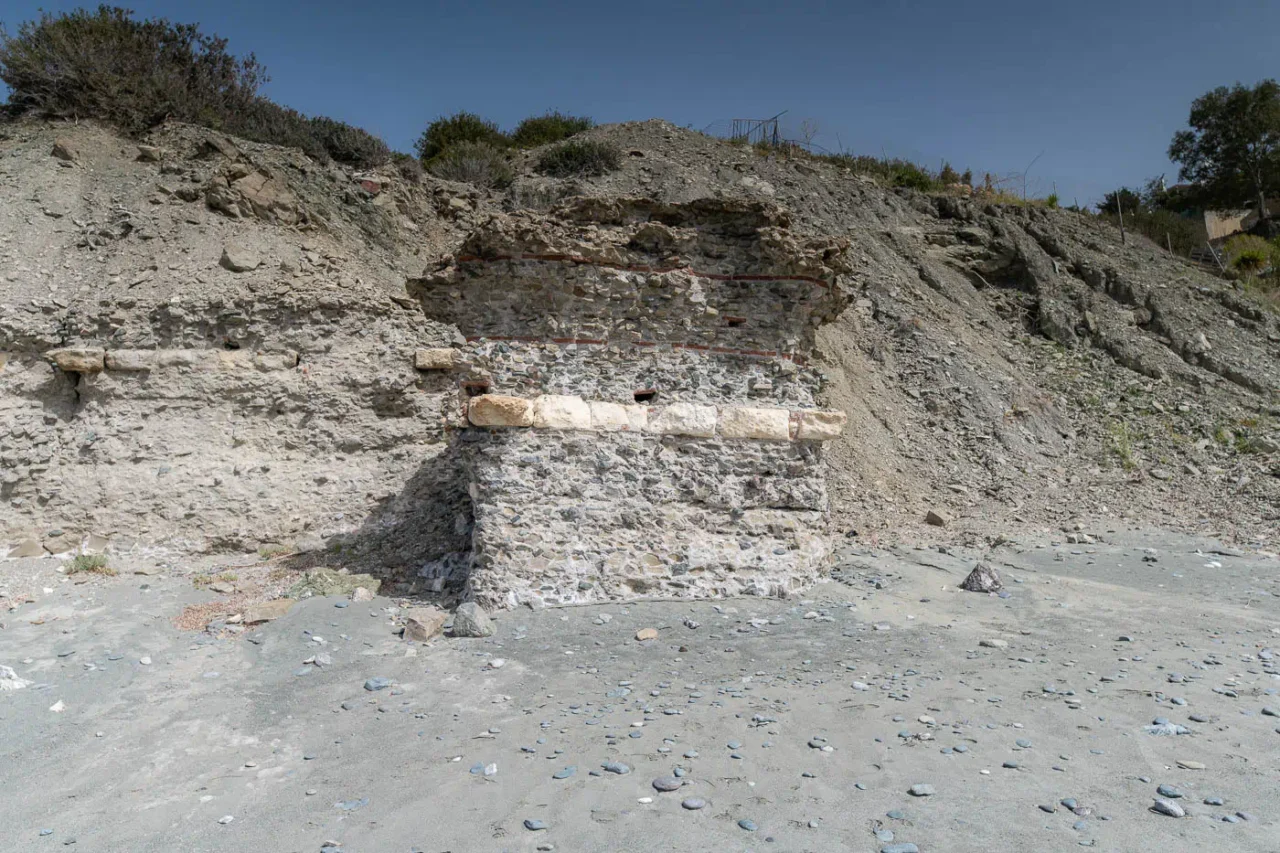
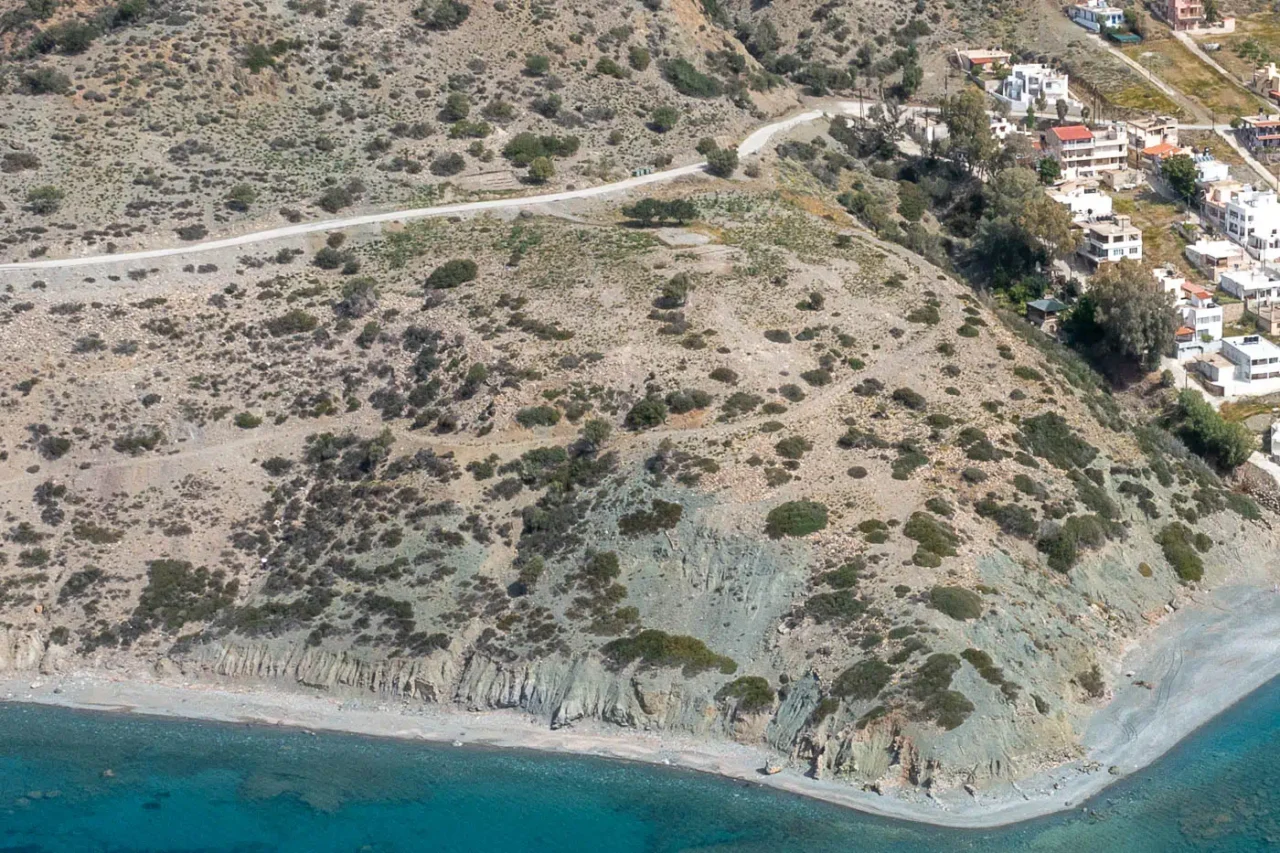
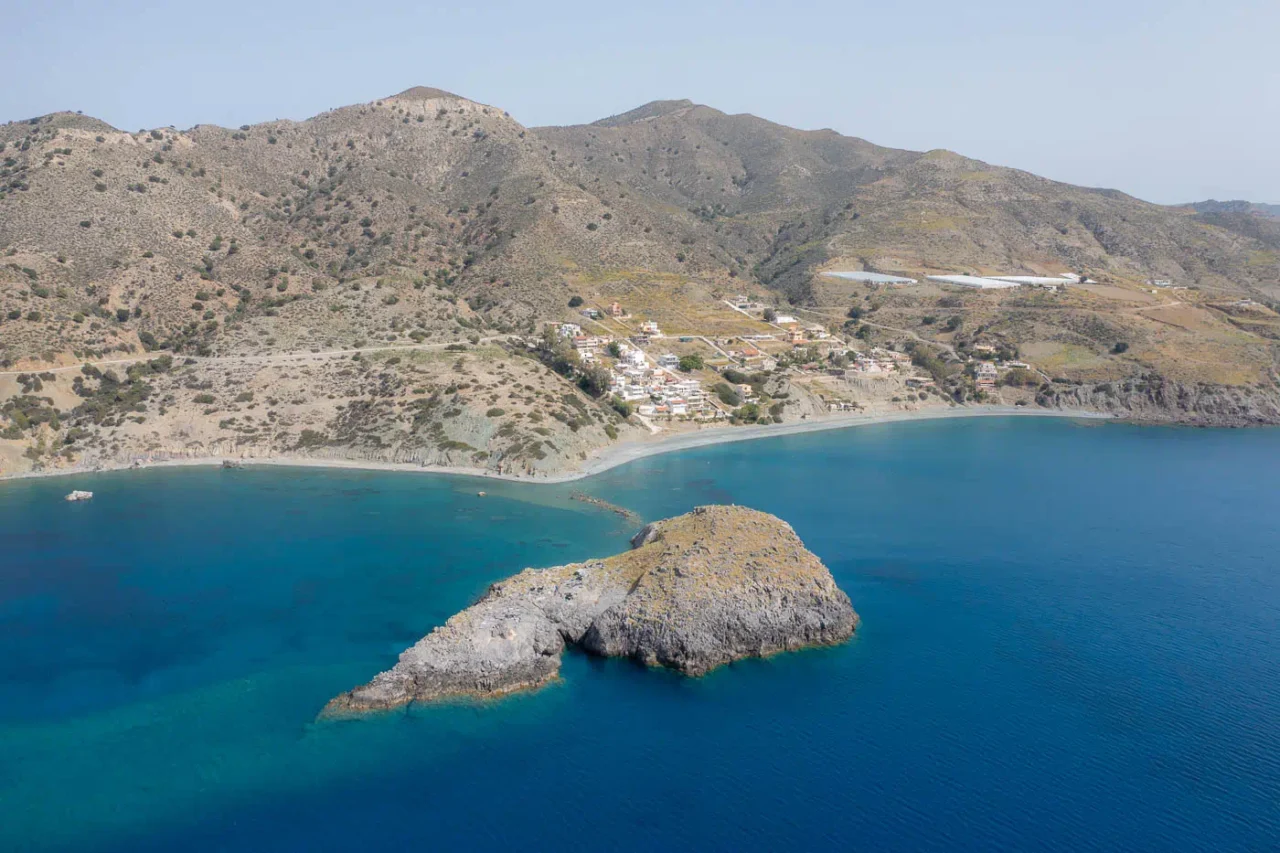
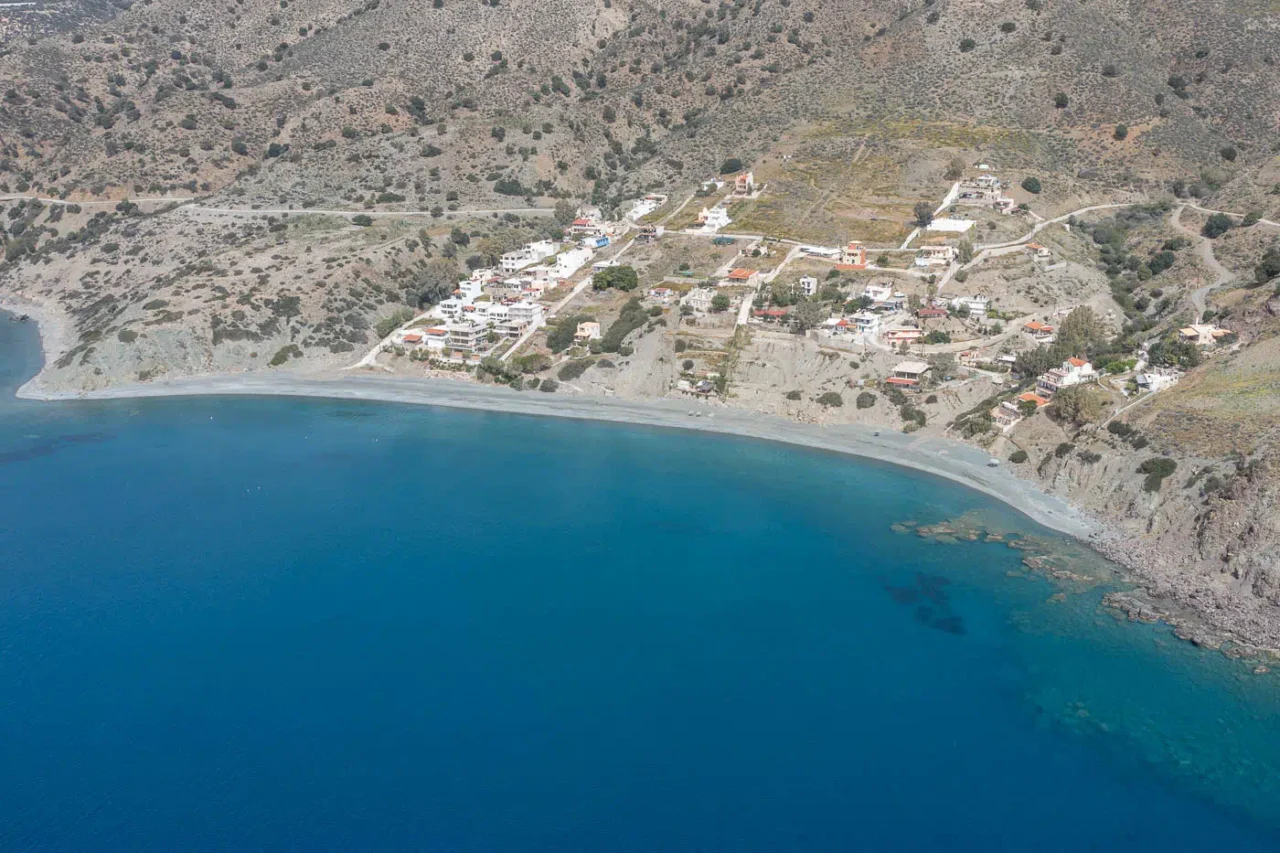
Lasaia, also known as Lasaea, Alassa, or Alas, was an ancient coastal town situated in southeastern Crete, Greece. It was strategically positioned near the sheltered bay of Kaloi Limenes (‘Fair Havens’), offering a safe harbor on Crete’s southern coast, which is otherwise exposed to the elements. Lasaia’s history spans from the Minoan period to Roman times, with its peak during the Roman era when it served as a vital port for Gortyn, the capital of Crete during Roman rule.
Historical Context
-
Minoan Presence: While no extensive Minoan settlement has been unearthed in Lasaia itself, the presence of Early Minoan tholos tombs and a small farmstead suggests some level of Minoan activity in the area, likely linked to the nearby copper deposits and the bay’s suitability for small boats.
-
Hellenistic and Roman Flourishing: Lasaia saw significant development during the Hellenistic and Roman periods. It functioned as a dependent polis of Gortyn, playing a crucial role in the region’s economy, particularly in maritime trade and the export of resources like copper and other minerals from the nearby area of Chrisostomos. The town’s importance as a maritime hub is further underscored by the discovery of Roman coins assigned to it as ‘Thalassea’ or ‘Thalassa,’ emphasizing its connection to the sea.
-
Biblical Connection: Lasaia is mentioned in the New Testament’s Acts of the Apostles. In 59 AD, the Apostle Paul’s ship sought shelter in the bay of Kaloi Limenes during a stormy voyage to Rome. The narrative describes the bay as ‘Fair Havens’ and mentions Lasaia as a nearby town.
Archaeological Features
-
Urban Layout: The ancient town was built on a ridge, separated from the coast by a steep cliff. The settlement covered an estimated area of 2.5 hectares and featured various structures, including warehouses, a church, houses, a temple, and a cistern with an aqueduct. An earlier Hellenistic acropolis was located on a nearby hill.
-
Harbor Installations: The most striking feature of Lasaia is its well-preserved harbor complex. It includes two breakwaters: an outer breakwater constructed during the Minoan period and an inner breakwater built during the Hellenistic-Roman era. These breakwaters created a sheltered harbor basin, crucial for maritime activities in this region. The harbor’s strategic location and infrastructure suggest that it served as a key node in the maritime networks of the Aegean and the broader Mediterranean.
-
Necropolis: The cemetery of Lasaia, situated on the hills west of the town, has yielded valuable insights into the town’s inhabitants and their cultural connections. Excavations have revealed various types of tombs, including chamber tombs and pit graves, dating from the Classical to the Late Roman period. The presence of funerary reliefs with Athenian influences suggests connections with the wider Greek world, particularly during the Classical and Hellenistic eras.
Significance
-
Maritime Hub: Lasaia’s well-protected harbor and its location on Crete’s southern coast made it a crucial maritime center, facilitating trade and communication between Crete, the Aegean islands, and the broader Mediterranean region. The presence of the Minoan outer breakwater highlights the site’s maritime significance even during the Bronze Age.
-
Economic Center: The town’s proximity to copper and other mineral deposits in the Chrisostomos area suggests that it played a vital role in the extraction and export of these resources, contributing to the region’s economic prosperity.
-
Cultural Crossroads: The archaeological finds, particularly the funerary reliefs and imported pottery, indicate that Lasaia was not an isolated community but actively engaged in cultural exchange with other parts of the Greek world.
-
Geoarchaeological Insights: Recent geoarchaeological research has shed light on the dynamic relationship between Lasaia’s coastal landscape and sea-level changes over the past 4,000 years. These studies have revealed how the town’s inhabitants adapted their harbor installations to the changing coastal environment, ultimately abandoning the site when rising sea levels rendered the harbor unsuitable for maritime activities.
Archaeological Site: Key Points
- Construction Period: Minoan to Roman periods (with peak activity during Roman times)
- Location: Southeastern Crete, near Kaloi Limenes bay
- Dimensions: Estimated urban area of 2.5 hectares
- Historical Significance: Important port town, economic center, and cultural crossroads
- Current Status: Archaeological excavations and geoarchaeological research are ongoing
References
- Mourtzas, Nikos and Kolaiti, Eleni. (2021). Palaeogeography of Ancient Lasaia (SE Crete, Greece). Méditerranée.
- Anzalone, Rosario Maria. (2012). Lasaia epineion di Gortina. Annuario della Scuola archeologica di Atene e delle missioni italiane in Oriente.
- Vasilakis, Antonis Thomas. (2013). The 147 cities of ancient Crete.
- Stampolidis, Nicholas Chr & Tsangari, Dimitra & Giannopoulou, Mimika. (2019). The cities of Central-west Crete in historical times.













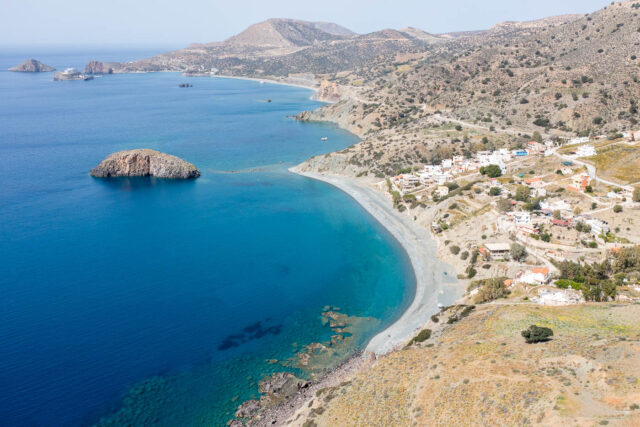



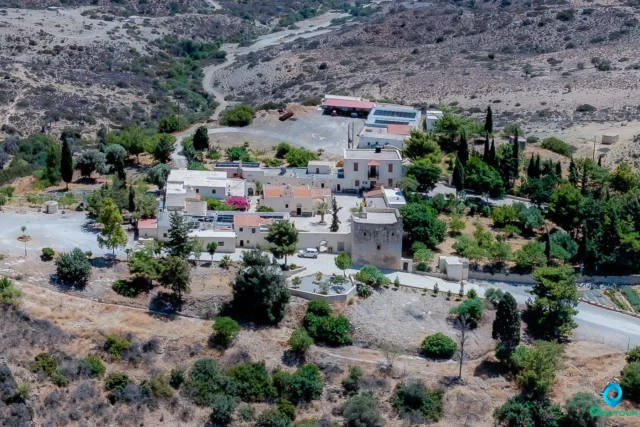
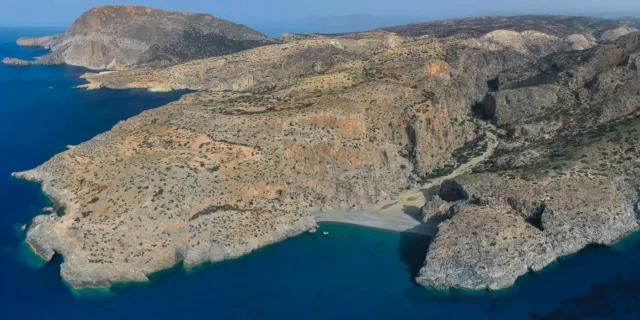
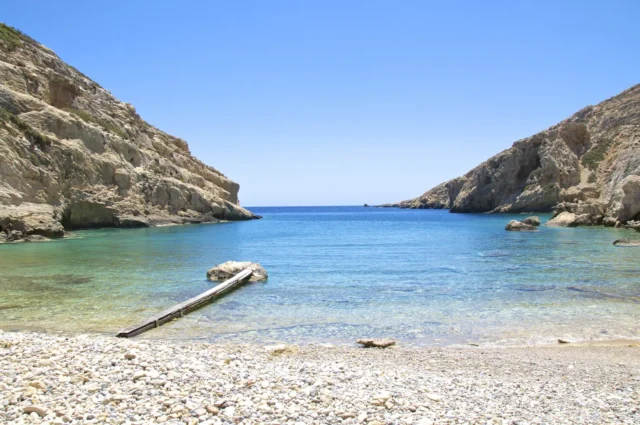

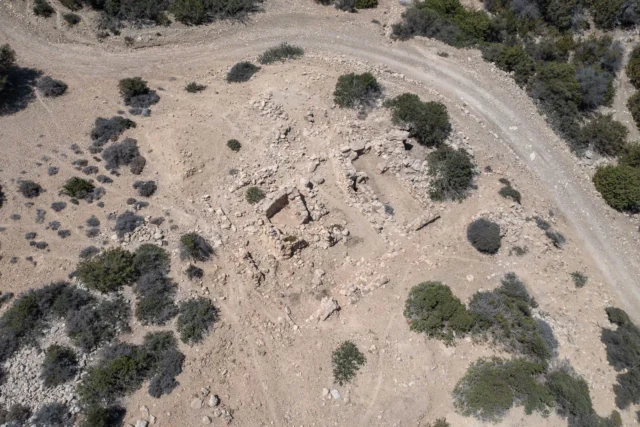
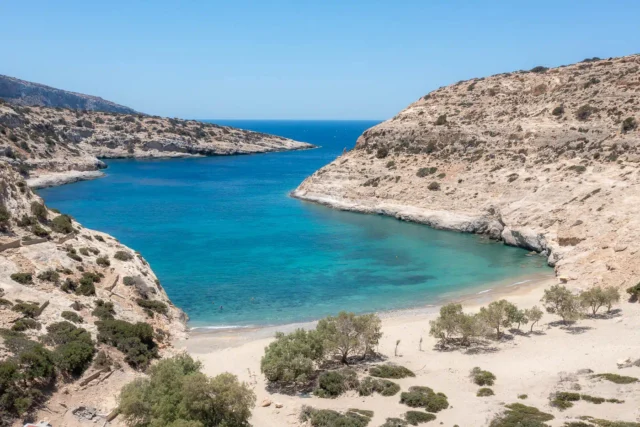
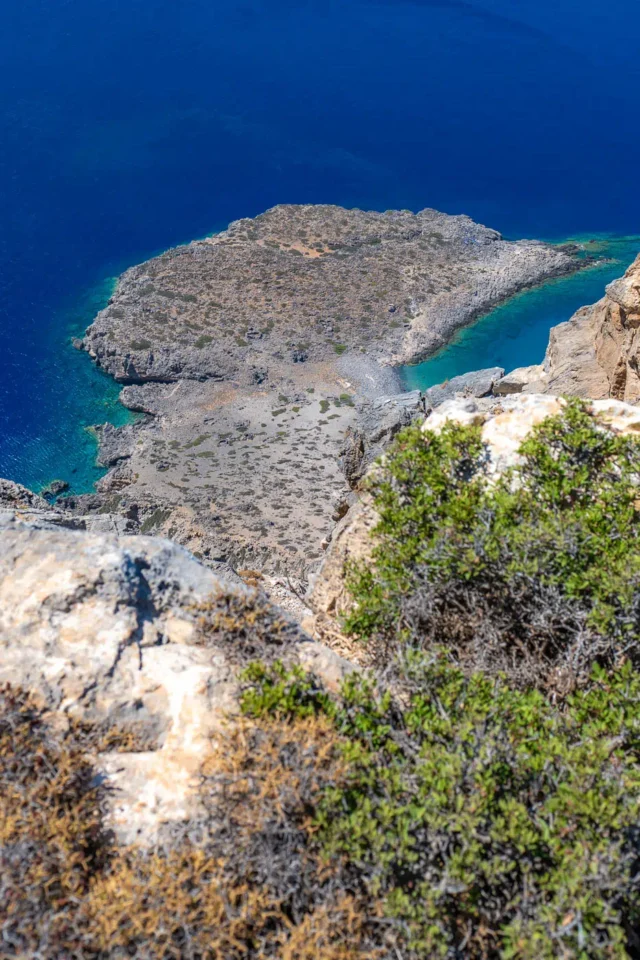

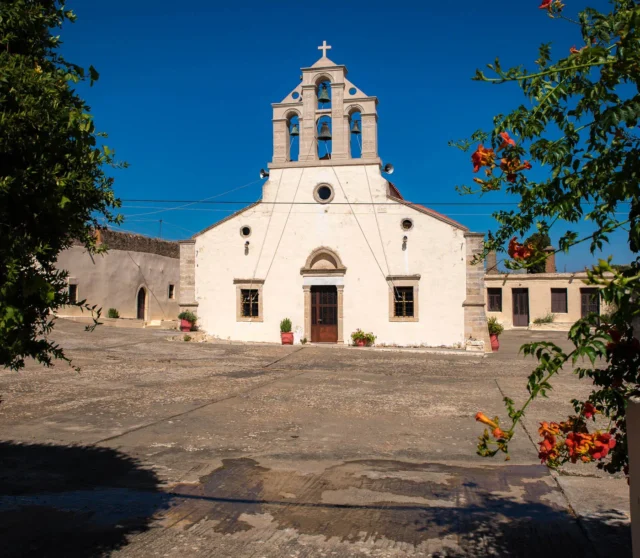
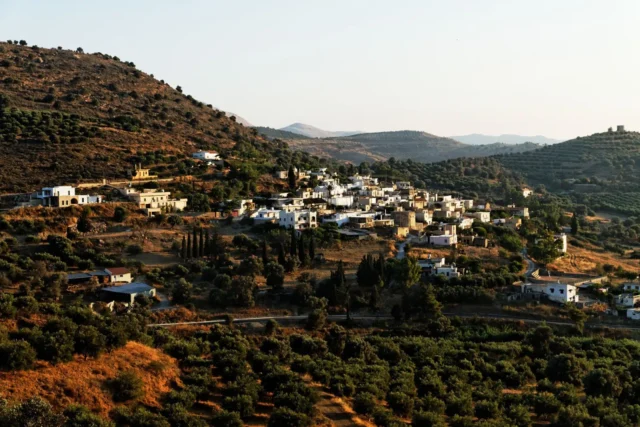

There are no comments yet.